Jamaican Wildlife Threatened By International Biopiracy
A growing illicit trade threatens Jamaica’s wildlife
By Zadie Neufville
IPS
Kingston, Jamaica – News of Vienna’s Schoenbrunn Zoo’s newest attraction shocked Jamaican authorities. The unlikely stars: a flock of 45 endangered Jamaican Amazon parrots, hatched from eggs smuggled out of the island in rum-cake boxes.
The 23 Yellow-Billed Parrots and 22 of their even more rare Black-Billed cousins were the survivors from the incubation of 74 eggs smuggled into Austria by tourists returning from Jamaica. Both species are protected and considered endangered species.
Conservationists are beginning to fear that as demand grows for rare and exotic wildlife, Jamaican authorities will be unable to protect the island’s natural treasures.
It is not uncommon to see local wildlife, including the Black and Yellow-billed Parrots, being offered for sale in tourists towns across the island, but the idea that people would smuggle the birds or their eggs surprised even scientists.
But animal care specialist and educator Karlene Craig is not surprised.
“There is a massive trade in endemics all across the region. Our birds actually make good pets, especially the Black-billed Parrot, as they are less aggressive and less noisy than other parrots and are quite chatty and entertaining,” she told IPS.
Parrot stealing aside, rumours flourish of a growing illegal trade in Jamaican wildlife.
The National Environment and Planning Agency (NEPA), which is responsible for protecting natural resources, has recently admitted to receiving “intelligence” regarding the illicit wildlife trade.
Protecting biodiversity
The agency says it is strengthening its enforcement capabilities and increasing general awareness of the value of local biodiversity. A specialised arm of the police enforces environmental laws.
Another tool to counter the trade is the 2010 State of the Environment Report, which provides an overview of the state and quality of the island’s natural heritage and, according to NEPA, helps with sustainable management of Jamaica’s natural and physical environment.
A variety of other programmes and initiatives also aim to protect Jamaican biodiversity.
The Sea Turtle Monitoring Project, a partnership between NEPA, community-based and non-governmental organisations, educates people about and protects sea turtles nesting on the island.
A few miles outside the popular tourist town of Negril, members of the Bluefields Bay Fishermen’s Friendly Society have, after a decade of work, successfully curtailed the poaching of turtles from the fishing beaches in Bluefields Bay.
“In the past, we would regularly pick up the shells of butchered turtles from the beach,”
spokesman Wolde Cristos told IPS.
“Last year there were none and we have not found any dead turtles so far this year. We also protected 40 nests and guided 1,500 baby turtles to the sea,” he said.
Despite the initiatives, Jamaica slipped more than a dozen places on the Environmental Performance Index: from 54th out of 149 countries in 2008 to 89th of 163 countries in 2011. The 2012 EPI ranks Jamaica 63rd out of 132 countries.
Byron Wilson, a scientist at the University of the West Indies (UWI), told IPS that problems are exacerbated by
“the deplorable attitude of many Jamaicans toward wildlife”.
“Incompetence”, habitat destruction from illegal logging and charcoal burning, corruption and a lack of enforcement are some of the main threats to Jamaican wildlife, according to Wilson, who heads the Iguana Headstart and Management Project.
A international black market
In 15 years, the project has multiplied the number of breeding female iguanas from six to 33 by removing hatchlings from the wild. The baby lizards are raised at the Hope Zoo in Kingston until they are big enough to fend off predators.
Despite this isolation, some believe the iguanas may not have escaped the smugglers. Craig, the animal care specialist, worried that aside from those sent to U.S. zoos for breeding purposes, some of the extremely rare lizards have already been eaten or smuggled out of the island.
Reports indicate there are a growing number of private menageries, in addition to increasing instances of tourists regularly placing orders for rare species.
The shopping list often includes: Hawksbill, Leatherback and fresh water Jamaican Slider turtles, the Jamaican Boa and the crocodile, all of which are protected species. The Ringed-tailed Pigeon is in particular demand by wealthy locals.
Locals also speak of a growing internal trade fueled mainly by the appetites of newly arrived Chinese immigrants, with dead sharks whose fins have been removed washing up on some shores. Craig and Wilson say they have heard similar reports.
“The enforcement of the laws is totally inadequate. Rangers monitor only the fringes and roads in protected areas,” Wilson said.
While some find it difficult to believe that wildlife is being smuggled through the ports, Wilson noted that corruption might be driving the illicit trade. The idea is unsurprising given that Jamaica ranked 86th out of 186 countries on the 2011 Global Corruption Perception Index, scoring 3.3 out of 10.
Jamaica’s rich biodiversity makes it fifth in the world in terms of endemism. Unfortunately, there are 37 Jamaican species on the 2010 IUCN Red List of Threatened Species. There are 52 threatened animals and 209 at-risk plant species. The island is also ranked fifth on the Red List for animals at risk of extinction.
“We have one of the rarest lizards in the world, and we could lose it,” Wilson lamented.
Sources: IPS | Haiti Chery added photos of wild parrots.

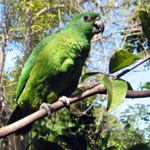
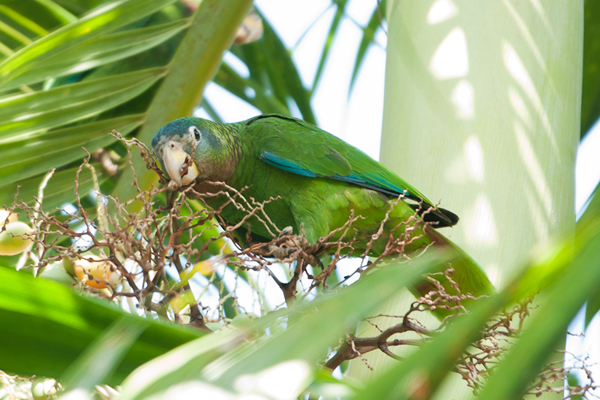
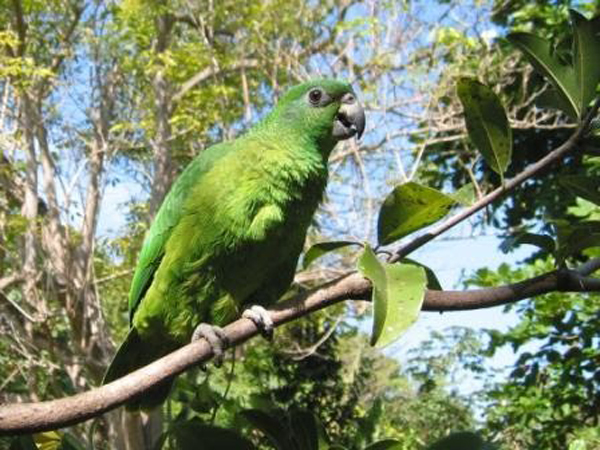

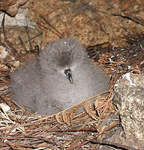
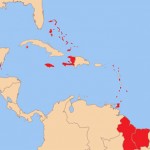
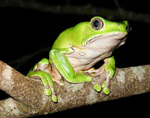


Comments
Jamaican Wildlife Threatened By International Biopiracy — No Comments